|
Displaying items by tag: Art
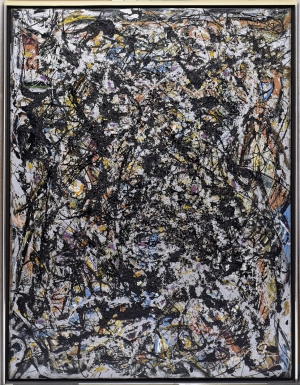
In the 1970s a coat of varnish obscured Sea Change (1947), an important work by Jackson Pollack that signaled his transition famous drip technique. The Seattle Museum of Art has tackled the restoration of Sea Change, which is a cornerstone of the institution’s collection.
Efforts appear to be going well as reporters and photographers were invited to the museum on Tuesday, November 27, to see the progress firsthand. Led by the museum’s chief conservator, Nicholas Dorman, the undertaking is complicated due to the multiple types of media used by Pollack and the sheer depth of the painting’s surface. Measuring approximately 4 x 5 feet, Sea Change consists of many layers including several types of paint (oil, house and commercial, early acrylic), a white oil base, aluminum paint drips, and imbedded gravel.
In order to preserve the original painting, Dorman had to become as familiar as possible with the work underneath the layer of old varnish. He carefully studied old X-rays of the painting as well as photographs of Pollack at work in order to learn more about the composition itself.
Bank of America’s Art Conservation Project is funding the restoration work on Sea Change. Launched in 2010, the initiative has provided about $2 million to the conservation of art and artifacts of cultural and historical value around the world.
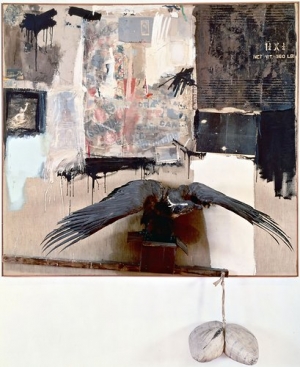
The children of the New York art dealer, Ileana Sonnabend, have donated Robert Rauschenberg’s mixed media assemblage, Canyon (1959), to the Museum of Modern Art in New York. While the acquisition is a welcomed addition to MoMA’s existing Rauschenberg collection, the work wasn’t always so warmly regarded.
The Sonnabend heirs received Canyon after their mother’s death in 2007 and the work was soon at the center of a battle between MoMA and the Metropolitan Museum of Art, where the piece had been displayed intermittently since 2005. MoMA ramped up its efforts and promised to add Ms. Sonnabend’s name to the Founders Wall in the museum’s lobby. Officials also vowed to mount an entire show devoted to Canyon as well as Sonnabend, an important player in the modern art movement. While the Met made offers of their own, the Sonnabend family ultimately decided that MoMA was the right home for the work considering the expansive Rauschenberg collection already in the institution’s possession.
Sadly, this is not the first dramatic episode Canyon has been involved in. When the Sonnabend children inherited the work five years ago, appraisers valued the assemblage at $0. The presence of a stuffed bald eagle, a bird that is protected by federal laws, halted any possible sales of trades involving the work. The I.R.S., on the other hand, shrugged this off and claimed that Canyon was worth $65 million and demanded that Sonnabend’s family pay $29.2 million in taxes and another $11.7 million in penalties.
Eventually, a settlement was worked out and I.R.S. dropped all tax charges. In order for this to happen, the Sonnabends were required to donate Canyon to a museum where it could be put on public display. Canyon will be on view at MoMA beginning today, November 28.
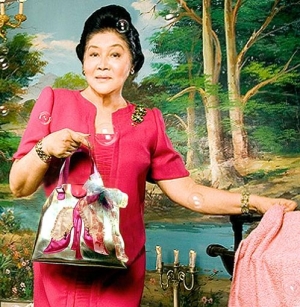
Known for her extravagant shoe collection, one-time Philippine first lady, Imelda Marcos, also accrued an admirable art collection during her late husband’s reign. Marcos’ former secretary, Vilma Bautisa, was indicted on Tuesday, November 20th, on charges of conspiracy, tax fraud, and offering a false instrument for filing, all relating to artworks that had previously belonged to Marcos. 74-year-old Bautista acquired a number of important paintings from Marcos and her husband, Ferdinand, after his regime came crashing down in 1986 after a citizen revolt.
The Manhattan District Attorney hit Bautista, a New York resident, with charges that she was conspiring to sell paintings that were the legal property of the Philippine government. The District Attorney’s office claims that Bautista used false paperwork to sell Le Bassin aux Nymphéas (1899) from Claude Monet’s Water Lilies series in September 2010 for $32 million. The other works in Bautista’s possession are Monet’s L’Eglise et La Seine a Vétheuil (1881), Alfred Sisley’s Langland Bay (1887), and Albert Marquet’s Le Cypres de Djenan Sidi Said (1946). The four paintings involved in the suit once hung in a Manhattan town house used by Imelda Marcos and her husband.
Two of Bautista’s nephews were also charged but did not appear in court. Bautista pleaded not guilty and was released on a $175,000 bond.
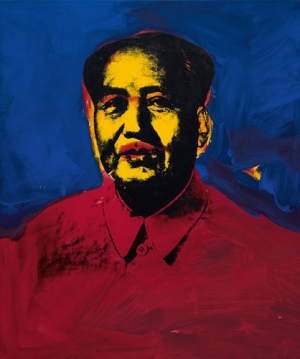
Phillips de Pury & Company’s Contemporary art auction took place on November 15 in New York and garnered $79,904,500, a seemingly humble amount compared to the $887.5 million auction powerhouses Sotheby’s and Christie’s collectively raked in just days earlier.
A smaller scale auction house than its counterparts, Phillips de Pury offered 37 works, many of which were by younger emerging artists. Dan Colen, Tauba Auerbach, Rashid Johnson, and Sterling Ruby all hit record prices, but the top lot of the night was Andy Warhol’s portrait of Mao Zedong (1973) that sold for its low estimate of $12 million. Another Warhol portrait, this time of Jacqueline Kennedy from 1964, was being sold by Eli Broad and reached $11 million; it was expected to bring $10 million to $15 million. Jean-Michel Basquiat’s Humidity (1982) sold for $9 million, falling considerably behind its low estimate of $12 million. Another Basquiat, Self-Portrait (1982) fared better and brought $4 million, breaking its high estimate of $3.5 million despite having its authenticity questioned earlier in the day.
The auction total landed in the middle of its pre-sale estimate of $73,620,000-$110,730,000. While the edgier offerings from Phillips continued to sell well, works by more established artists brought less impressive prices. While this could be the result of mediocre quality, it is important to remember that tying up a $1 billion auction week is no easy feat.
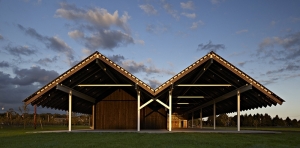
Earlier this month the Parrish Art Museum opened its new 34,400 square-foot building in Water Mill, NY to the public. Founded in 1898 by New York lawyer, Samuel Longstreth Parrish, to house his growing art collection, the museum had been a staple in Southampton, NY before moving to its new location that boasts seven sky-lit galleries and three times the exhibition space than that of the museum’s former home.
Now that the $26.2 million move is complete, the result of years of painstaking fund-raising, the Parrish hopes to become the area’s artistic epicenter. Designed by the Swiss architectural firm Herzog & Meuron in collaboration with the landscape architecture firm Reed Hilderbrand, the new Parrish building sits on 14 acres of land right off of the Montauk Highway. The building is meant to blend into the landscape and consists of connected, stretching barn-like structures that sit under a white corrugated metal roof. Large sections of glass allow the line between the natural and artificial worlds to blend.
An American art museum with about 2,600 paintings, sculptures, and works on paper in its collection, the Parrish pays extra attention to the art of the East End of Long Island. The former Southampton location was simply too small to exhibit many of the exemplary works from the museum’s permanent collection that spans from the 19th century to the present. Now, American Impressionist William Merritt Chase and the realist Fairfield Porter each have their own permanent galleries and there are three galleries just for temporary exhibitions.
Inaugurating the space is Malcolm Morley: Painting, Paper, Process, an exhibition devoted to the English-born artist known for exploring paper’s many artistic possibilities including watercolors, scale models, and freestanding sculptures. Approximately 50 works from the 1980s to present will be on view through January 13, 2013.
The Parrish’s new building also includes offices, a café, an expanded lobby, and a theater where film screenings, lectures, and performances will be held.
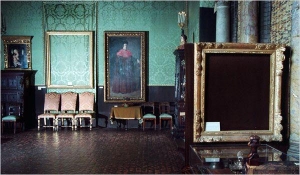
In March of 1990, two thieves posing as Boston police officers entered the Isabella Stewart Gardner Museum and stole thirteen works of art including masterpieces by Vermeer, Rembrandt, Edgar Degas, and Edouard Manet. Now known as the greatest art heist in history, the case has remained unresolved despite the countless hours of investigating the FBI has conducted. While the Bureau has offered immunity to anyone who assisted in the recovery of the artworks, they have never received a concrete lead.
While it would appear that the reputed organized crime figure, Robert V. Gentile, who found himself in federal court this Wednesday on drug trafficking and gun possession was irrelevant to the Gardner case, the FBI believed Gentile had vital information to share. Gentile, 76, of Manchester, Connecticut, helped federal authorities for 10 months prior to his arrest but none of the information was useful in tracking down the thieves. Gentile’s lawyer claims that his client did know some of the individuals the government believed were involved in the heist, but that most of them were dead by now. Gentile now faces a maximum of 150 years in prison if he is convicted. The government is willing to negotiate his sentence so that his prison term will be reduced to 46-57 months.
Gentile became involved in the Gardner case when Elene Guarente, the widow of Robert Guarente, a mob associated who died in 2005, told investigators that her husband gave Gentile a painting that he had kept in a tube since the 1990s.
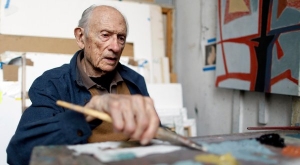
A printmaker and painter, there is a quiet, striking quality that pervades all of Will Barnet’s art. Best known for his portraits of women, children, animals, family members, and friends, Barnet passed away at his home in Manhattan on November 13. He has lived at the National Arts Club building on New York City’s Gramercy Park since 1982. Barnet was 101.
A native of Beverly, Massachusetts, Barnet studied at the School of the Museum of Fine Arts, Boston and then, starting in 1931, at the Arts Students League in New York. It was here that Barnet studied briefly with the early Modernist painter Stuart Davis and became acquainted with Arshile Gorky, a major influence on Abstract Expressionism. Four years after joining the League, Barnet was named the official printer and went on to work for the Works Progress Administration Federal Art Project. He also made prints for well-known artists such as the Mexican muralist Jose Clemente Orozco and the painter and cartoonist William Gropper.
Barnet started out as a Social Realist printmaker and had his first solo exhibition in 1935 at the Eighth Street Playhouse in Manhattan. Three years later, he had his first gallery show at the Hudson Walker Gallery. It was during this time that he married Mary Sinclair, a painter and fellow student. They had three sons.
In the 1940s Barnet was inspired by Modernist inclinations and his paintings became more colorful and fractured, depicting family scenes and young children. By the end of the decade Barnet moved towards complete abstraction after becoming involved with the Indian Space Painters, a group that created abstract paintings using forms from Native American art and modern European painting.
In the 1950s Barnet divorced Sinclair and remarried Elena Ciurlys with whom he had a daughter. It wasn’t until the 1960s that Barnet returned to representational painting, often using his wife and daughter as subjects. Barnet’s style had evolved and the portraits from this time are flatter and more exact. He also made a number of portraits of the architect Frederick Kiesler, the art critic Katherine Kuh, and the art collector Roy Neuberger during this time.
Barnet never stopped painting and continued to experiment and evolve stylistically, returning to abstraction in 2003. In 2010 he was the subject of the exhibition Will Barnet and the Art Students League at the Phyllis Harriman Mason Gallery in Manhattan. He was awarded a National Medal of Arts in 2011, which he accepted from President Obama at a ceremony at the White House. The subject of many museum retrospectives, Will Barnet at 100, which took place at the National Academy Museum in 2011, was the last.
Besides his work as an artist, Barnet was also an influential instructor. He taught graphic arts and composition at the Art Students League in 1936 and went on to teach painting at the school until 1980. Barnet also taught at Cooper Union from 1945 to 1978 and briefly at Yale, the Pennsylvania Academy of Fine Arts, and other schools.
Barnet is survived by his wife, three sons, one daughter, nine grandchildren, and three great-grandchildren.
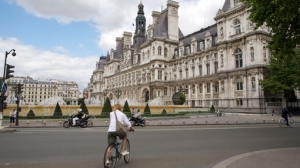
Next fall doors will open to Paris’ Parsons the New School for Design for the second time. Frank Alvah Parsons, who founded the New York School of Fine and Applied Art (now Parsons), initially opened a French branch in 1921. The Paris location closed temporarily during World War II and when Parson merged with the New School for Social Research in 1970, the Paris branch was included. The New York and Paris campuses continued to grow apart until their association was no more than a technical one. In 2010 the Paris institution changed its name to the Paris College of Art and the New School could return to Paris using the Parsons moniker.
The new campus will be announced on November 29 at the Palais de Tokyo. Located on the Rue Saint-Roch, the Paris School of Art and Design will accommodate 300 to 500 students, who will be able to begin their studies there or in New York. Parson also has associated campuses in Shanghai and Mumbai. The school will offer bachelor’s and master’s programs in multiple art disciplines, fashion, design, and business.
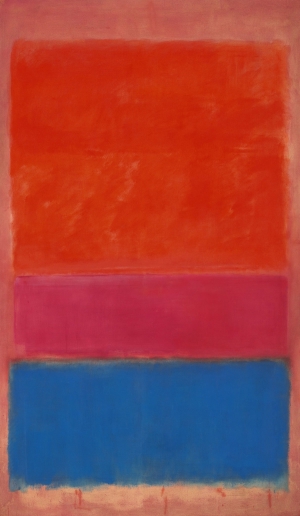
The Contemporary art auction that took place at Sotheby’s Tuesday night made up for any disappointment stemming from last week’s Impressionist and modern art sale. Profits from the Contemporary sale reached $375.1, the highest total for any auction in Sotheby’s history. The previous record of $362 million was set in May of 2008.
The biggest sale of the night, Mark Rothko’s No. 1 (Royal Red and Blue) (1954) stirred up some competition and ended up selling to a telephone bidder for $75.1 million after the auction house’s fees. Other impressive sales included Jackson Pollack’s Number 4, 1951 that brought $40.4 million with fees, a record for the artist, and Francis Bacon’s Untitled (Pope) (1954) that sold for $29.7 million with fees. A number of high-quality works on paper by Andy Warhol also sold well. Green Disaster (Green Disaster Twice) (1963) sold to newsprint tycoon, Peter Brant, for $15.2 million and Suicide sold to the Manhattan art dealer, Philippe Ségalot, for $16.3 million, a record for a Warhol work on paper.
Out of 69 works offered at the auction, only 11 went unsold.
A sharp upswing in the value of South Africa’s best-known art has led to the country’s biggest art heist. Posing as paying visitors at the Pretoria Art Museum, three men proceeded to hold the museum staff at gunpoint and walk away with works by local masters Irma Stern, Gerard Sekoto, JH Pierneef, Maggie Laubser, and Hugo Naude.
Images of the criminals were not recorded because the museum’s camera surveillance system broke down on November 8, three days before the heist. Officials did alert Interpol. The three criminals left behind the most expensive piece in the museum’s collection, Two Malay Musicians by Irma Stern, due to lack of space in their getaway car. Works by other well-known South African artists such as William Kentridge, Walter Battiss, and Robert Hodgins were left untouched.
The five stolen artworks were owned by the City of Tshwane and were insured.
|
|
|
|
|